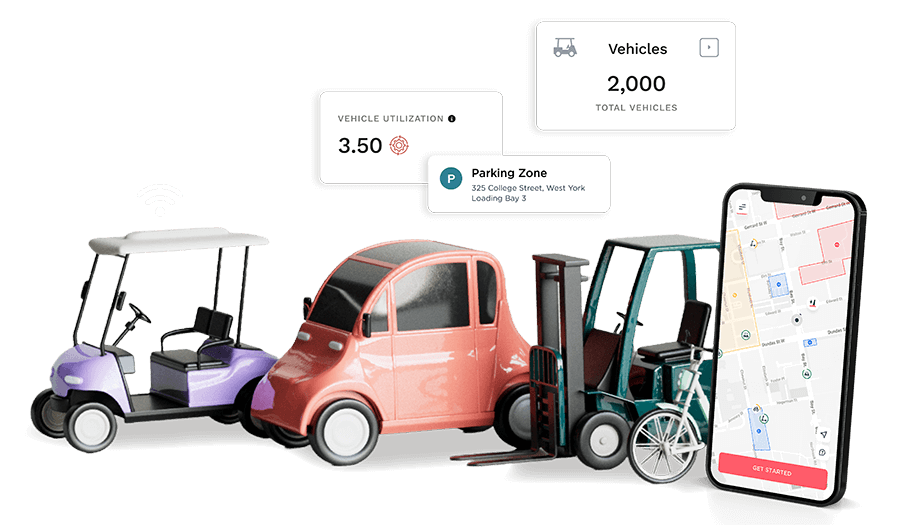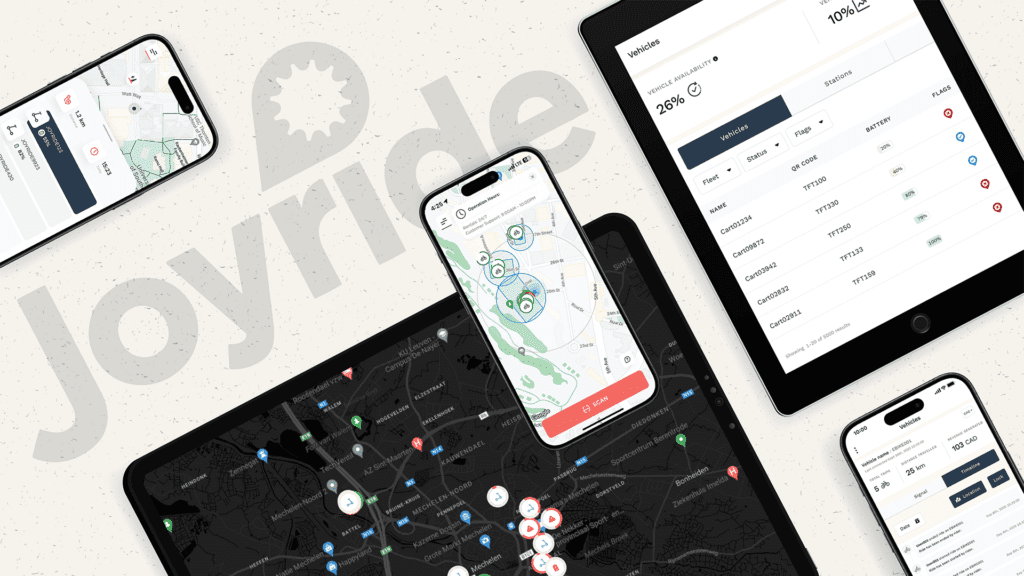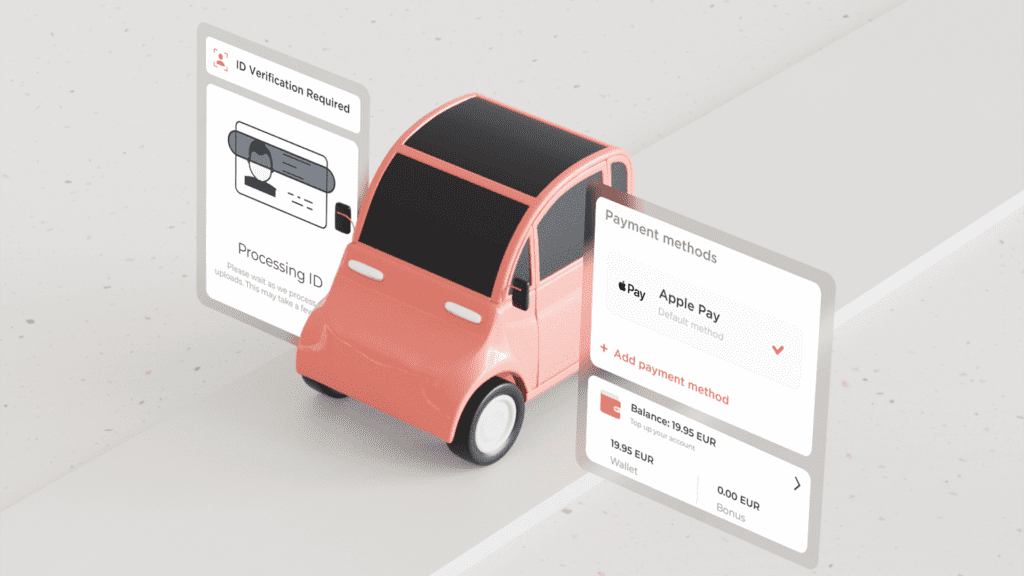Picture this: The clock says it’s lunchtime and you’re craving a bean and cheese burrito. You submit a delivery order to a nearby restaurant. While your burrito is prepared, the restaurant’s order management system connects with the delivery app and assigns your burrito for pickup.
A delivery driver retrieves the burrito, heads to your address, and, thanks to GPS technology, you watch your precious cargo move in real-time. The driver arrives, hands you the burrito, and you’ve got a delicious hot lunch – all in under 30 minutes.
Sound familiar?
If you live in a densely populated city, it’s likely your lunch made its journey from the restaurant via an e-bike. Even more likely, the driver handled multiple orders on a single trip, optimizing their route to deliver not just one burrito, but 10 at a time.
On-demand delivery powered by micromobility vehicles is everywhere, and it isn’t limited to food either. Today’s consumer can easily order anything online – from a solid wood table to a puppy (yes, really).
To understand the current state of the delivery supply chain and how micromobility-minded entrepreneurs fit into the puzzle, we invited Ksenia Proka from Whizz and Jonah Bliss from Curbivore to join our delivery-focused Joyride Academy Webinar, hosted by Joyride’s Head of Partnerships, Andrew Miles.
Read on for the three biggest takeaways from Connecting the Dots in Delivery:
What is last-mile delivery?
Last-mile delivery refers to the transportation of goods from a distribution center to the final destination; either a retail location or directly to the end-consumer. Small electric vehicles are perfect for last-mile delivery as they offer an efficient and eco-friendly means of transporting goods over short distances with reduced environmental impact and increased maneuverability in congested urban areas.
Takeaway 1: Modern commerce has moved to the curb
Specifically in North America, delivery vans haul thousands of pounds of parcels and perishable goods from mega-distribution centers–all over cities, all day long. The delivery business is clearly booming, but why? And how cities are managing this mass movement of goods?
According to Ksenia Proka, delivery surge began before the pandemic, but stay-at-home restrictions catalyzed the shift in consumer expectations. Society is hooked on fast and free delivery, but we don’t think about the carbon-cost and labor it takes to get these goods to our doorstep.
“More than 60% of customers expect delivery within three business days,” Ksenia said. “And more than 80% expect that to be guaranteed.”
Companies are under a lot of pressure to deliver on these expectations. As cities get busier with freight and deliveries, we’re facing a real challenge—air pollution, noise pollution, greenhouse gas emissions and traffic congestion. There are also limitations on space. In a dense metropolis like New York City, traditional class 4 or 5 vehicles cause major obstructions to bike lanes, curb-space and traffic flow.
It isn’t all doom and gloom though. As a self-professed ‘curb whisperer,’ Jonah was happy to share examples of how Modern Delivery is becoming more efficient.
“Automatic storage lockers make sense from a unit-economic standpoint,” he said. “In New York they’ve started to pilot a municipal storage locker program.”
Exciting changes are even taking up entire blocks. New York City and Los Angeles (among others) are already testing “zero-emission delivery zones” (ZEDZs) – exclusive areas for pedestrians, cyclists and electric vehicles.
“On the macro level there’s a surge of federal spending towards electrification” Jonah said. There’s also been a steady uptick of government grants and attention put towards infrastructure for smaller form factors such as e-bikes. There’s recognition that “you need the right vehicle to move the right goods.”
Takeaway 2: Last-mile delivery is a first-rate opportunity for fleet owners
While it turns out you can deliver a fridge with a cargo bike, it’s probably not the ideal vehicle to do that job consistently. From the sidewalk rovers to electric quadricycles, there’s a growing variety of form-factors making deliveries–so which companies are behind the wheel?
For parcels we all know UPS, FedEx and DHL. With food and grocery delivery, there’s dozens of options including SkipTheDishes, Deliveroo, Instacart and Getir. One thing we’ve discovered at Joyride is that most of these companies don’t want depreciating assets on their balance sheets, but they desperately need access to those vehicles to carry out deliveries.
Jonah pointed out that “individual companies (such as independent retail and restaurants) are struggling to find delivery efficiencies, and many of them are turning to third party delivery (3PD) as a way to cut costs and mitigate issues such as driver shortages.” While some might be able to outsource delivery to a single 3PD, others are forced into what Jonah called a “spray and pray” approach, meaning they partner with as many delivery service providers as possible.
This creates a huge opportunity for fleet owners to supply electric vehicles to 3PD service providers, as well as directly to the delivery workers themselves. Purchasing a high-quality electric bike isn’t cheap, so long-term rental subscriptions offered by the likes of Zygg, Zoomo and Whizz are an attractive alternative.
Despite passing vehicle costs onto their workers, the reality is that most delivery companies are still losing money. Ksenia noted that “wages for the delivery drivers are one of the largest costs.” So much, that a recently proposed wage increase in NYC is causing four 3PDs to sue the city.
Ksenia explained that while minimum wage hike might be bad for those companies, it could actually be a boon for the industry. “After the news was announced, there was a huge surge in web searches for how to join companies such as Uber Eats and DoorDash as a driver.”
If working as a delivery rider is treated as a more permanent position “the cost to acquire new riders will go down and people will stay in these positions much longer,” she added.
Takeaway 3: Safe and efficient delivery starts at the power source
An increase in earning potential might attract more drivers, but even with a fair wage delivery service workers face a litany of problems; inclement weather; vehicle theft, navigation issues; stingy customers; order downtime; road safety; and most hazardous, e-bike related battery fires.
A few years ago, the keen observer would have noticed that most delivery workers in New York were pedaling (or pretending to pedal) the same type of e-bike. The vehicle itself may be fit for the job, but take a cheap battery that isn’t certified, drain it to zero over a non-stop delivery shift, charge it unsupervised overnight, then repeat, and you’ve got a recipe for disaster.
As one of Joyride’s resident micromobility hardware experts, Andrew had much to add on the topic of battery health. “You’re limited to what these manufacturers have already sourced for the batteries,” he said. “Some companies offer multiple types of batteries ranging from ‘Chinese-sell’ to reputable brand-name batteries like LG, Panasonic, and Samsung… but you’re still working with lithium-ion.”
According to Ksenia, this translates to a big opportunity in battery manufacturing.
Phosphate batteries and solid-state batteries are examples of emerging alternatives to lithium-ion, “but no battery is 100% risk-free to damage or explosion.” Jonah added that what’s really lacking is standardization. “Even the larger e-bike players continue to ship different standards, with varying cell and pack construction, thermal management, overcharge protection, and charge ports.”
The solution for now? “If you can, invest in a battery management system,” said Andrew. “Real-time data and sensory technology go a long way to managing battery health – as well as knowing when to decommission and implement end-of-life recycling practices.” He added, “It’s really about risk mitigation, preventative maintenance and prescriptive maintenance. You can have the software systems and data in front of you, but you need operational policies in place to make sure you’re checking things and not just relying on sensors.”
Summing it up
So, what have we learned about Delivery as a Service? First, that it’s a massive industry changing the way products and people move around cities. It’s also an ecosystem struggling to find efficiencies, meaning there are big opportunities for fleet owners to connect the dots. Here’s where Joyride’s DaaS all-in-one software platform comes into play, providing fleets with fully automated and trackable systems to enable growth and seamless management.
Lastly, it’s in need of paradigm-shift including government-supported infrastructure, workforce empowerment and safety standards for charging and battery-swapping.
Of course, this is just the beginning. Or a taste, so to speak. Be sure to watch the full webinar on Joyride Academy to hear more about the exciting world of DaaS. Joyride Academy is our FREE online learning hub with courses, videos and how-to guides on all things micromobility. If you’re looking to drive change within the delivery space, click here to join the waitlist for Joyride’s DaaS solution.













